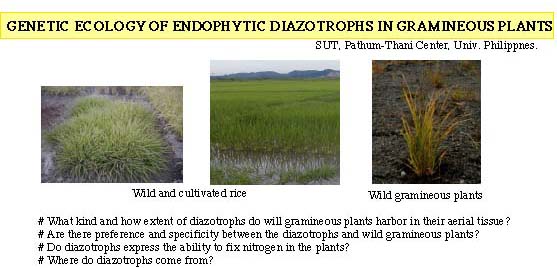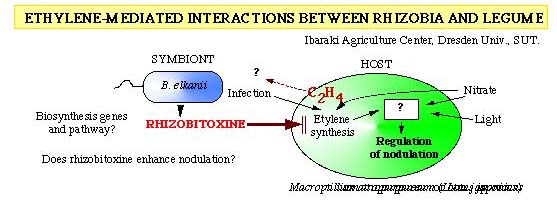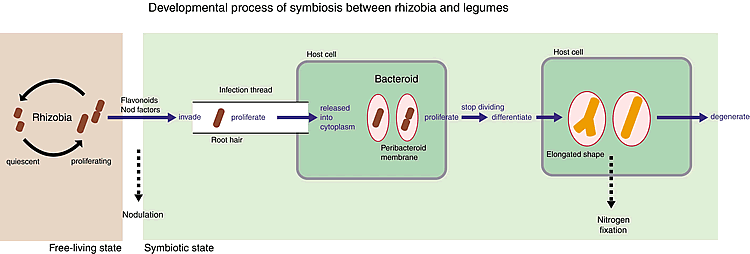| 1.
Genetic Ecology of Soybean Bradyrhizobia |
| |
Soybean bardyrhizobia are gram-negative soil bacteria that have the ability
to form root nodules on soybean and to fix atmospheric nitrogen. Indigenous
soybean bradyrhizobia showed genetic diversity and endemism in terms of
fingerprints by various insertion sequences including RS-alpha, RS-beta
and IS1631. Recently, we are interested in relationships between
environmental adaptation and HRS strains possessing high copy numbers of
the insertion sequences. |
 |
2. Genetic Ecology
of Endophytic Diazotrophs in Wild Gramineous Plants |
| |
Recent discovery of nitrogen-fixing endophytes inside gramineous plants
prompted us to explore unknown nitrogen-fixing endophytes in wild grasses.
Generally, wild grasses have high populations of diazotrophs inside the
plant tissue. We are successfully isolated various types of nitrogen-fixing
endophytes, and found host preference for internal colonization and nitrogen
fixation. Our research questions are as follows: |
 |
3. Ethylene-mediated
Interactions between Rhizobia and Legume |
| |
Bradyrhizobium elkanii of soybean bradyrhizobia produce rhizobitoxine
that inhibit ethylene biosynthesis in host legume plants. Rhizobitoxine
enhanced competitive nodulation in some legumes. Therefore, we are addressing
how rhizobitoxine enhance nodulation via ethylene-signaling pathways, and
how rhizobitoxine synthesize in B. elknaii. |
 |
4. Molecular Genetics
of Rhizobial Symbiotic Development |
| |
The developmental process where rhizobial cells differentiate into nitrogen-fixing
endosymbionts inside of the leguminous plant cells is directed cooperatively
by both microsymbiont and host genes. We are researching the molecular mechanism
mainly from the genetics of microsymbionts. Recently we found out the essential
function of one of the sigma factors in both stress-response and symbiotic
nitrogen fixation. |
 |



